| |
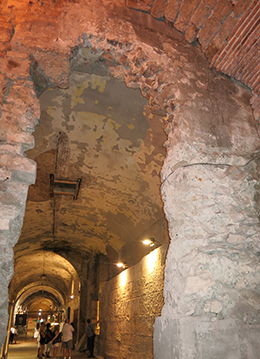 |
|
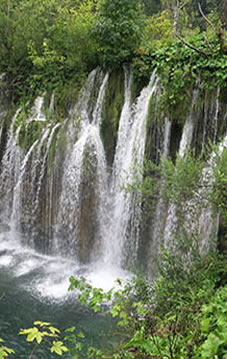 |
|
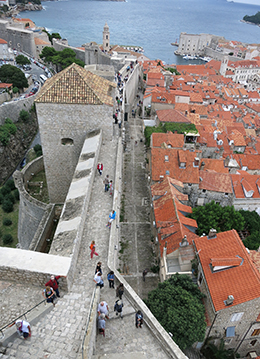 |
|
| |
Diocletian's Palace |
|
Watery Plitivic |
|
Dubrovnik's walls |
|
Diocletian’s
Palace. Watery Plitvice Lakes National Park. Roadside stands rich with succulent honey and flavorful
grappa. Tall walls that climb up and around Old Town
Dubrovnik. Welcome to surprising Croatia.
Our group of eight had
spent a week with others bicycling some of Croatia’s Adriatic Sea islands. Now
we were heading for another week touring some of the county’s best-known sites.
We left the bicycles and our new friends behind to split for Split.
But before we reached
Split, Croatia’s second largest city, we detoured north to Plitvice Lakes National Park. In a country with many scenic highlights, Plitvice is typically regarded the top choice. It didn’t
disappoint.
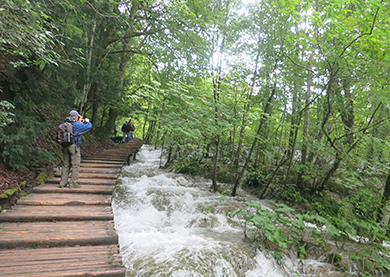 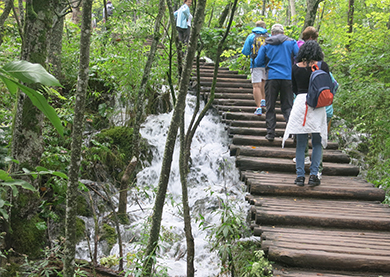
Boardwalks
lead over streams and past tumbling waterfalls
For several hours we walked
along a series of meandering trails, mostly on wooden plank boardwalks, some
just inches above a sea of flushing streams and others above turquoise-colored
rumbling, rippling rivers. In places the walkway flanked curtains of seemingly
endless falls. Portions of the water-drenched boardwalk where the water had
overflowed were made passable on carefully placed 2- by 4s. Many times, the
curling trailed so close to cascading waterfalls that the misty spray left us
pleasantly soaked. It’s no surprise that Plitvice was
named a UNESCO World Heritage Site in 1979.
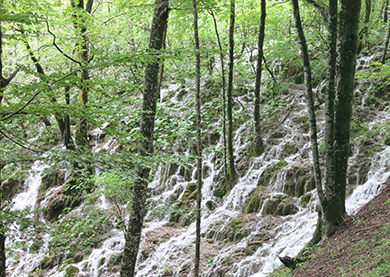 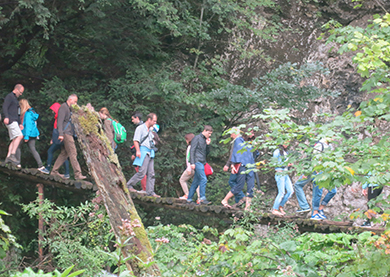
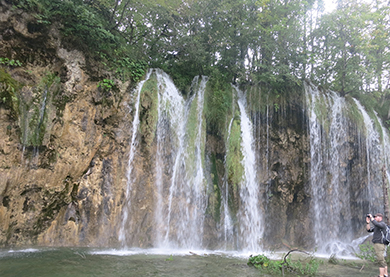 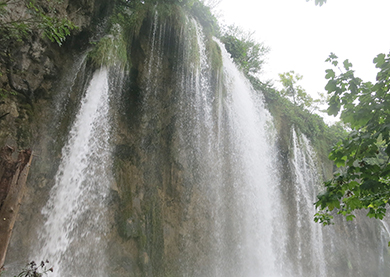
Gusting
falls seem to erupt from everywhere
Our too-short visit focused
on the upper lakes, a section reached by a short ferry ride. Not surprisingly,
the gusting volumes of water have created a maze of luxuriant vegetation
dominated by beech forests. And, not surprisingly, we weren’t alone. Other
gawking walkers were as flowing as steadily as the streams. Plitvice receives more than 1-1/2 million visitors a year.
Trading nature for history
A day later, we exchanged
nature for history, truly ancient history. Split is Croatia’s second largest
city, but what draws visitors is Diocletian’s Palace. The Roman Emperor
Diocletian, known for persecuting early Christians, had his Adriatic-facing retirement
palace built between 295 and 305. He made the palace his home after abdicating
his title as emperor, insisting he be treated as a god.
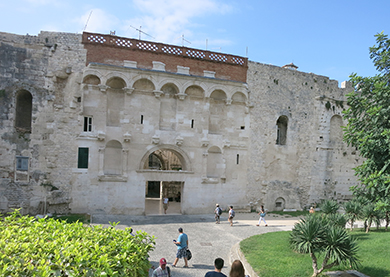
The palace from outside
| |
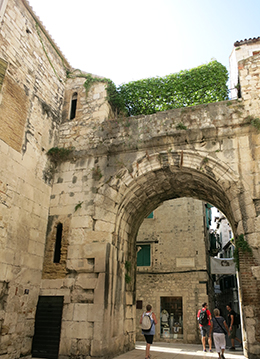 |
|
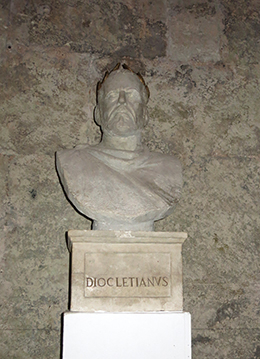 |
|
| |
Roman columns |
|
Diocletian's bust
|
|
The stone palace is layered
in history. Used by other Roman rulers after Diocletian’s death, it was later
barricaded as a series of dynasties conquered the region. Uniquely, the palace
isn't a sterile museum. Instead, it remains a lively, lived-in city with 3,000
inhabitants. There are the requisite tourist sites within the palace, but its
narrow, puzzle-like network of streets and passages are alive with locals
living real lives.
| |
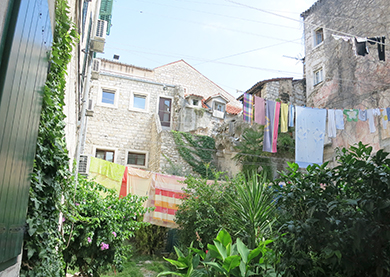
|
|
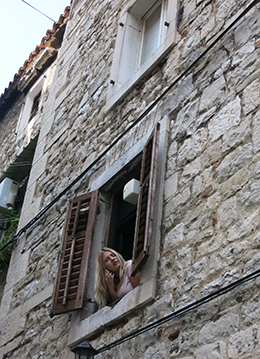 |
|
| |
Day's laundry |
|
View from above |
|
| |
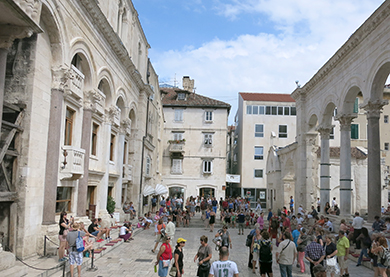 |
|
The streets outside the
castle are lively, too. Just outside the castle entrances are a fascinating
array of sales tables, some with locally made art work,
others with regional foods. These, cheek by jowl with flea
market stands selling a United Nations array of Roman coins, African statutes
and Bombay taxi horns. |
|
| |
The
palace's main thoroughfare |
|
|
|
On to Dubrovnik, with a
detour
The drive from Split to
Dubrovnik is much like any other drive, except when it leaves the modern
freeway and follows a two-lane road along the scenic coastline. Eager to get
out and stretch, we pulled our van over, enticed by the scents and sights of
offerings at another series of roadside stands.
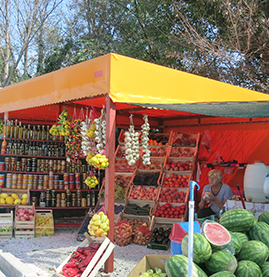  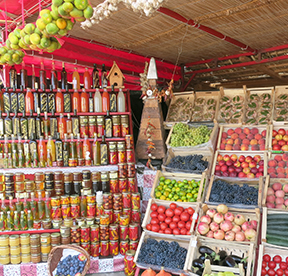
Colorful
roadside stands offer a variety of temptations
Temptations surrounded us:
stalls offering fresh fruits, rich-textured jars of honey, and colorful
containers of various flavored grappas - some of
which we savored in the nights that followed in Dubrovnik.
Dubrovnik’s main attraction
is its walled Old City, a place of refuge from invading armies since the 7th
Century. Like Split, Dubrovnik is a coastal city, an historic important trading center. The wall was built to repel invaders. One
9th Century siege lasted 15 months.
| |
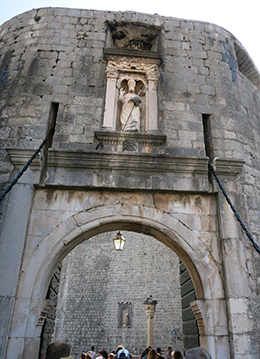 |
|
 |
|
| |
The Pile
Gate |
|
Relaxing on a steep street
|
|
Dubrovnik and its Old City
have held off other invasions. During the 1990s war that ravaged what was
Yugoslavia, the city was riddled by more than 2,000 shells.
Because of its dependency on tourism, most of the damage has been repaired.
| |
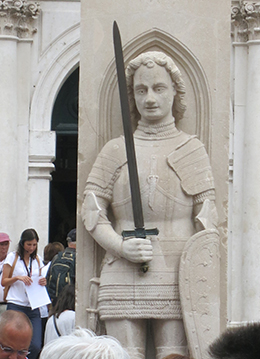 |
|
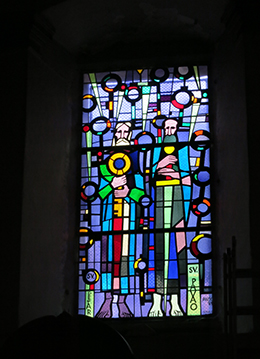 |
|
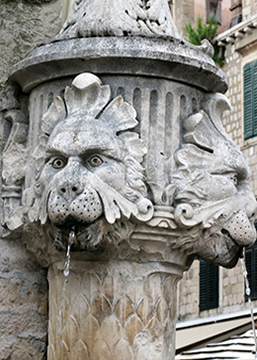 |
|
| |
Orlando |
|
Cathedral stained glass |
|
Multi-faced fountain |
|
Like most visitors, we
entered by crossing the drawbridge at the Pile Gate, which was built in 1537.
Years ago, the bridge was raised nightly. Inside is a maze of streets and
passageways, some leading to historic churches, including the Rector’s Palace,
Franciscan Monastery, Onofrio Fountain, Orlando
Column, Dominican Monastery and more. One morning we were guided by a woman
named Marina, a name she was given because she comes from a seafaring family. As
she told us, “There’s an old saying, ‘If you dip a finger in the sea you are
connected to the whole world.' ”
| |
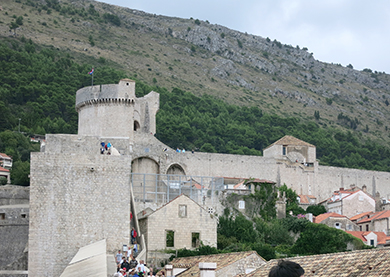 |
|
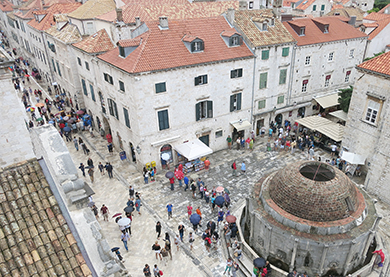 |
|
| |
Wall
walkers |
|
View from the wall |
|
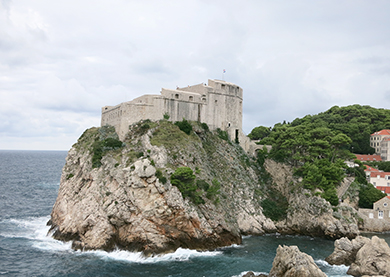
Fort Lovrjenac
The sights within the
protected town are fascinating, but I felt especially connected to Dubrovnik
while walking the wall. It’s an amazing walk with views of town and sea. The
one-way walking route climbs and drops, overlooking courtyards, school grounds,
streets, bell towers, the inner harbor and restaurants, including a memorable
eatery where I later slurped a plate of oysters. The walk passes the Miceta Tower, the detached Fort Lovrjenac, Bokar Tower and Reveline Fort. Friends and I were lucky enough to end our slow circuit just before a
thunderstorm exploded, firing off thunder and instantly soaking us with
torrential rains.
| |
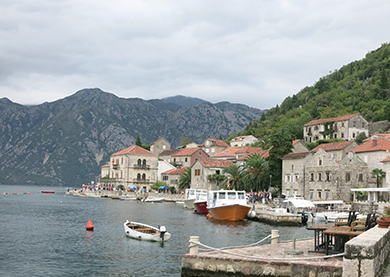 |
|
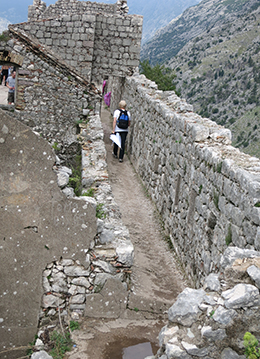 |
|
| |
Risan village |
|
The
walls of Castle St. John |
|

Weaving walkway goes up, up, up
A day later our group
visited nearby Montenegro. It was a long day. Stops at the waterfront village
of Risan and Kotor, where I
climbed the cobblestone city walls to the Castle St. John for incredible views,
were interesting but only marginally worth the effort.
| |
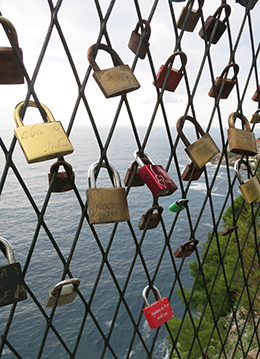 |
|
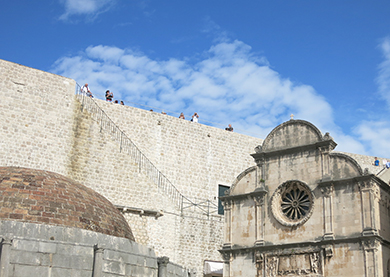
|
|
| |
Locks of
love |
|
Old Town looking up |
|
Our final day was better
spent with a return to Dubrovnik’s Old Town. Four of us walked from our hotel,
most interestingly passing chain-link fences decorated with simple locks, each
with the names of couples “locked” in love. Sweet. Being semi-familiar with Old
Town, we traipsed from shop to shop, scurried for cover when another
thunderstorm sent us running for cover and enjoyed a sumptuous lazy lunch.
Whether it was Old Town
Dubrovnik, roadside stands, the palace in Split or the surreal watery world at Plitvice, Croatia has offerings for a variety of palates.
About the author
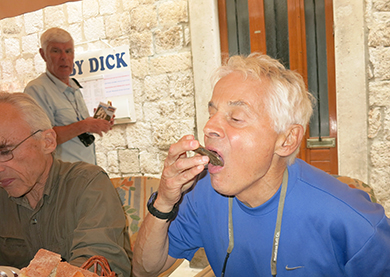
Lee Juillerat slurping raw oysters ... yum
Lee Juillerat is a longtime contributor to High On Adventure. He works for a daily newspaper
in Southern Oregon and is a freelance writer-photographer for a variety of
magazines and publications, most recently including Southern Oregon magazine,
Range and Alaska Airline in-flight magazine. He can be contacted at [email protected].
My thanks to Margo McCullough, who put together our Croatia trip. She can be contacted at her business, Cruisegirl, at margostravel.com or facebook.com/cruisegirl.travel.
|